September 2. NAIROBI "Visiting Karen" Breakfast at the Parkplace Hotel was probably the best breakfast we had ever had included in a hotel room. It was an English-style breakfast with the authentic squishy sausage, fatty bacon, fried egg, toast, fruit, and real coffee. It was a good start to the day. 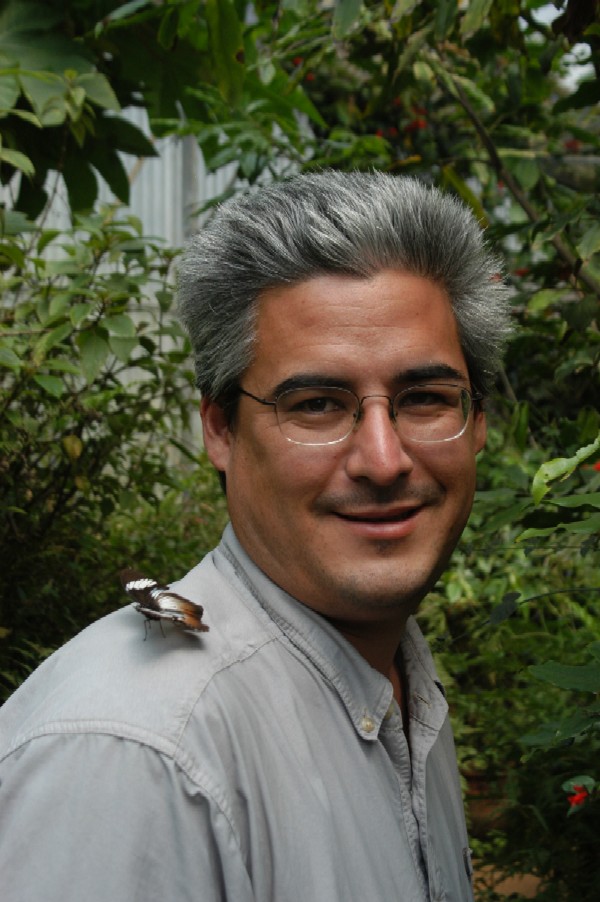
We negotiated with a taxi in front of the hotel to take us out to Karen, the rather upscale suburb named after Karen Blixen, author of Out of Africa. Her house, the front of which was featured in the movie, still stands amongst the hectares of land that was once her coffee plantation. The actual plantation land is now a golf club but her house remains as a museum. In the area were also a number of wildlife museums and the famous Carnivore restaurant, which made it a full day of sightseeing for us. The taxis were rattletraps but always clean inside and plenty expensive by Kenyan standards. Some of the sights could have been seen by using public transport but I wanted to take photos and didn't want to risk hauling my camera on the buses. Also it was unlikely we could have taken in all of the sights in during a single day unless we had our own transport. It made for an expensive day but really rewarding one.
Our tour of Karen started at the Butterfly Museum (www.african-butterfly.org). We weren't sure what to expect but decided if we were going out there we would see everything. It turned out to be a great little museum that included a simple exhibit about butterflies and a large greenhouse full of live specimens. A woman gave us a succinct but knowledgeable summary of facts about butterflies:
- Butterflies taste through their feet.
- Only butterflies and moths have scales which come off of their wings in what looks like dust. The scales don't regenerate but just continue to fall off during their short lives.
- Once fully developed into a butterfly it only lives for about six weeks.
- The main differences between butterflies and moths are that butterflies have club shaped antennae, moths rest with their wings closed, butterflies are generally more colorful, and only some moths can spin silk but no butterflies can.
- Butterflies defend themselves in various ways. Some are poisonous, others look like poisonous butterflies, and some have antennae -like backs so they can make a quick getaway when attacked from behind.
- Blue butterflies are actually red and cream colored and just reflect blue light.
 The whole exhibit was quite well done. There was even a cabinet where we could see the butterflies that had just emerged from their cocoons. There were just 30 species in the green house, out of hundreds that exist in Africa, but they were great fun to watch and photograph. A few chameleons were added as natural predators. The butterflies were so used to people that one actually landed right on Rob's shoulder. The whole exhibit was quite well done. There was even a cabinet where we could see the butterflies that had just emerged from their cocoons. There were just 30 species in the green house, out of hundreds that exist in Africa, but they were great fun to watch and photograph. A few chameleons were added as natural predators. The butterflies were so used to people that one actually landed right on Rob's shoulder.
From the Butterfly Museum we headed into the Nairboi National Park to visit the David Sheldrick Wildlife Trust (ww.sheldrickwildlifetrust.org), a center that raises orphaned elephants and rhinos so they can be reintroduced to the wild. Only from eleven to noon they bring the orphans out to eat and be viewed by the people. We arrived just before eleven and a big group was already waiting. The viewing area at the back of the center was roped off and everyone lined up as an eleven month old rhino came trotting out with its "parents". It was fairly small as rhinos go and in its way it was very cute. They keep the animals paired with caretakers that mimic the parental role and teach the orphan how to survive on its own. This young rhino needed to learn how to take a bath. A water hole stood just in front of the group and we watched the caretakers use a shovel, in lieu of a horn, to throw dirt up onto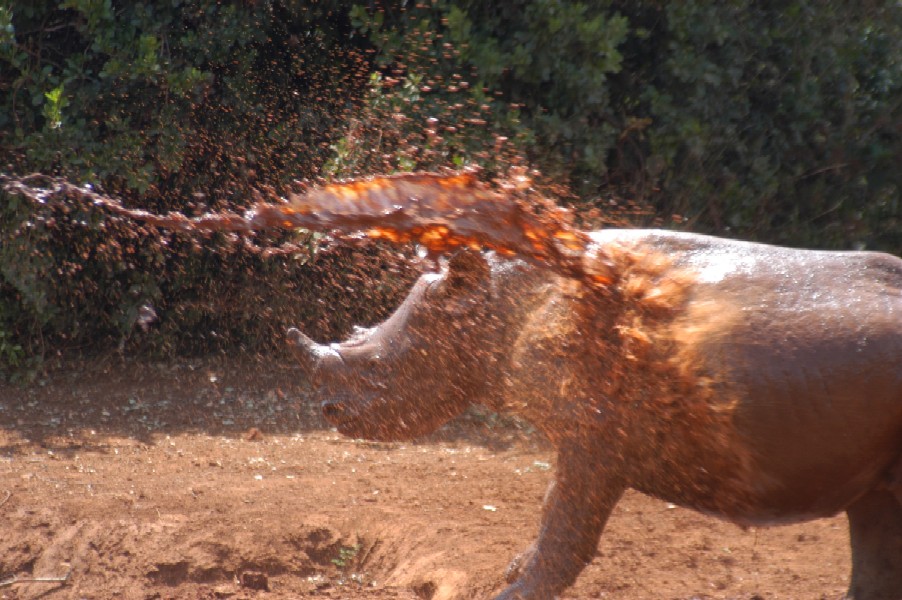 the rhinos back and a bucket to drench the animal in water. The baby was very attached to its parents and watched them carefully but totally objected to the water. Each time it was hit with water the little rhino staggered backwards shaking its head and stomping. We watched the rhino undergo its bath lesson for about 15 minutes. No terribly social animals the center limits its contact to people more than they do with the elephants. the rhinos back and a bucket to drench the animal in water. The baby was very attached to its parents and watched them carefully but totally objected to the water. Each time it was hit with water the little rhino staggered backwards shaking its head and stomping. We watched the rhino undergo its bath lesson for about 15 minutes. No terribly social animals the center limits its contact to people more than they do with the elephants.
As the "little" rhino went to the side as a group of six baby elephants came romping into the area. They were all around a year old and as they got close enough to see their bottles of milk at the opposite end of the grounds they started to trot. The "parents" held the bottles for their baby elephants, being pushed around a bit by the weight of the animals. Several of the elephants wrapped their trunks around the neck of the parent. A much more social and animated creature the elephants were very entertaining to watch. After their bottles they chomped on some branches. One walked along the length of the rope to get a pet from the people. But, the mud pool in the center became the star attraction. The first little elephant entered and splashed around with its feet and trunk before taking a full roll into the muddy water. It was joined by the others as they pushed each other with their trunks, stood on  each other, and just seemed to have a jolly great time frolicking in the pool. The interaction between them was incredible. They genuinely looked like they were teasing and taunting each other. I guess it isn't that surprising from an animal that actually buries and morns its dead. For all of their awkward bulk they are very intelligent creatures. One got his splashing directed towards the crowd and nailed many of us with bits of mud. After much work and fun they were covered in mud. It was a struggle to haul their weighty bodies out of the pool. They rocked back and forth to get momentum so they could roll right side up. Their legs slid on the sides of the pool and some gave up and rolled back in before trying again. Once out of the mud they wiped their eyes clean with the ends of their trunks and scratched their legs to loosen the clumps of mud. It was easy to just keep watching them but we finally pulled ourselves away and returned to the cab. each other, and just seemed to have a jolly great time frolicking in the pool. The interaction between them was incredible. They genuinely looked like they were teasing and taunting each other. I guess it isn't that surprising from an animal that actually buries and morns its dead. For all of their awkward bulk they are very intelligent creatures. One got his splashing directed towards the crowd and nailed many of us with bits of mud. After much work and fun they were covered in mud. It was a struggle to haul their weighty bodies out of the pool. They rocked back and forth to get momentum so they could roll right side up. Their legs slid on the sides of the pool and some gave up and rolled back in before trying again. Once out of the mud they wiped their eyes clean with the ends of their trunks and scratched their legs to loosen the clumps of mud. It was easy to just keep watching them but we finally pulled ourselves away and returned to the cab.
The final stop Rob had negotiated with our driver was at the Karen Blixen Museum, the house that she lived in during her time in Africa. The front of the real house was used in the movie Out of Africa, but the interior was recreated elsewhere for filming. Just as we arrived a large tour group piled into the museum. It wasn't a very big place so we opted to go have lunch and come back later. A popular tourist attraction we expected to find other cabs at the museum but there were none. It looked like everyone else was on an organized tour and the parking lot was full of minivans. In light of this Rob renegotiated with our driver, Peter, to return at 4:00 to take us to the giraffe center and on to the Carnivore restaurant.
From the museum we walked about a kilometer up the road to the Karen Cottages and Restaurant. The road was lined with walls of greenery but traffic was steady, otherwise we would have reconsidered walking. Karen was a very upscale neighborhood but the frequency of Mercedes passing us was still surprising. There was a staggering gap between Kenya's have and have-nots. The restaurant and cottages, called the Swedo House, used to be part of the Blixen property but was originally built for the Swedish Counsel in Nairobi. The Counsel built the house as well and sold it to Baron von Blixen, Karen's cousin and husband, later. The Swedo House maintained its colonial feel and the open garden was a perfect place for lunch. A bit of rain made us retire to the patio off of the bar but it was still pleasant. The food was very good and the serene atmosphere provided a rare treat for us. A glass factory stood on the grounds as well, where artisans hand carved images of African animals into glassware.
Returning to the Karen Museum it didn't take long for us to see the whole place. The house consisted of an office, dinning area, library, two bedrooms and a bathroom, with the kitchen in a separate building. It was modest by modern standards but the wood paneled walls and the furniture revealed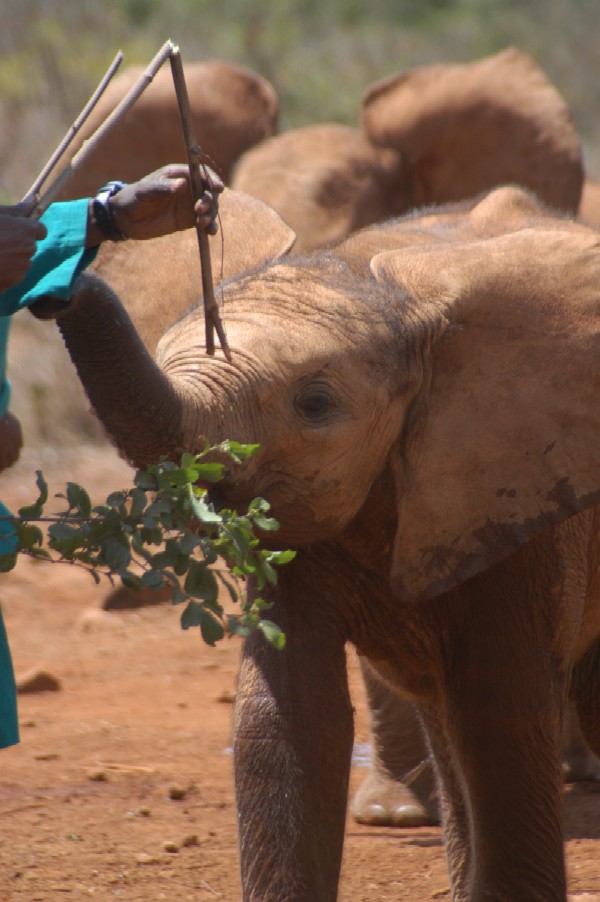 wealth. If you have seen the movie you know the story but Karen separated from her husband and after her lover, Denis Fitch Hatton, was killed in a plane accident she left Africa forever. She sold nearly everything and just returned to Denmark. Fortunately many of her things, originally brought from Denmark, were sold to a friend and the museum had managed to secure many of the original pieces. After our guided tour we sat in the expansive garden and reflected on this distant way of life that only just happened in the lifetime of our grandparents. Her land once extended all of the way to the knuckle shaped hills on the western horizon and included what is now the suburb of Karen. Sadly for her and the baron their property was not well suited to growing coffee and the plantation failed. wealth. If you have seen the movie you know the story but Karen separated from her husband and after her lover, Denis Fitch Hatton, was killed in a plane accident she left Africa forever. She sold nearly everything and just returned to Denmark. Fortunately many of her things, originally brought from Denmark, were sold to a friend and the museum had managed to secure many of the original pieces. After our guided tour we sat in the expansive garden and reflected on this distant way of life that only just happened in the lifetime of our grandparents. Her land once extended all of the way to the knuckle shaped hills on the western horizon and included what is now the suburb of Karen. Sadly for her and the baron their property was not well suited to growing coffee and the plantation failed.
We were done before 4:00 but Peter was already waiting so we moved on to the Giraffe Center. It was a long running center for breeding the nearly extinct Rothschild giraffe and provided the opportunity to feed these massive and majestic animals. It was thrown into our schedule mostly because we had time but turned out to be an incredible experience. A tower was constructed that allowed the giraffes to come right up and lean over the railing to be fed by hand. The largest was a male that stood 18 feet tall and was about 18 years old. At the top of the stairs we were given a handful of food pellets each and instructed to give them just one at a time so they didn't get overfed. I can't describe how intimidating it is to have a giant giraffe head swoop down in front of your face and project its over foot long tongue out for food. The breath was really awful and the saliva was sticky but you couldn't help but find these docile giants endearing. The male was the most assertive and kept a keen eye out for who had food in their hands. Once you held up your hand the tongue came out to catch the pellet. We got pretty good at dropping the pellet without saliva contact. It all seemed like too much work for such a little reward but the giraffes never got tired. There were a number of giraffes in the yard but only as many as three came to be fed. The other two were females, one not quite high enough to reach the railing. The ones we fed were permanent residents while their babies were reintroduced to the wild.
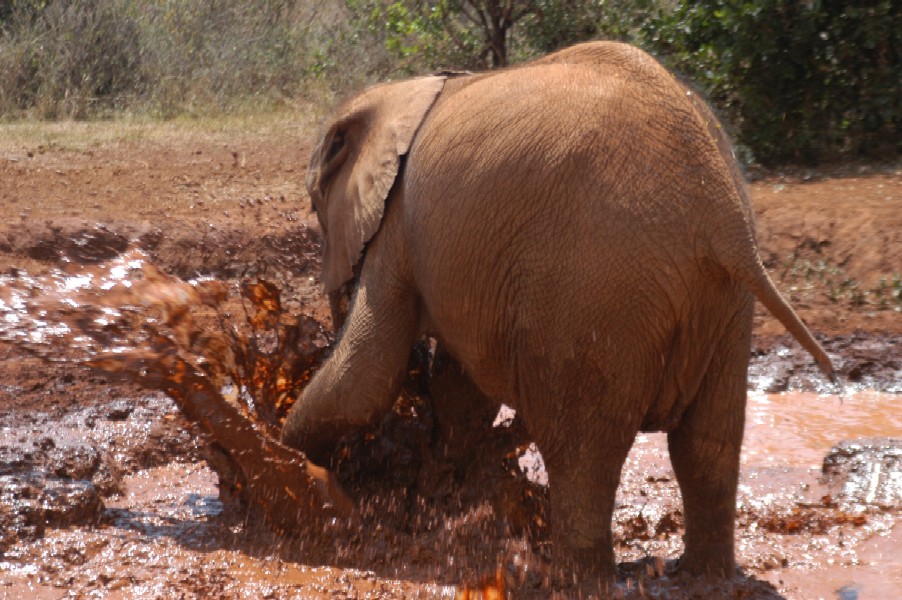 Also on the grounds were a group of warthogs. Warthogs made an appearance at the rhino and elephant center as well, a mother with a brood of babies trailing behind. A short animal with poor eyesight they rely on the bigger animals to keep watch and, in this case, help them find food. The warthogs had figured out that the giraffe pellets were tasty enough and started to come around regularly. The giraffe center decided there was no fighting it and thought it was best to make the irascible pigs more people friendly. They provided some food for the warthogs and their peculiar habit of kneeling while eating kept onlookers entertained. One of the warthogs jumped up on the fat wall that separated the people from the giraffes and appeared docile. Remembering his 4H days Rob reached over and scratched the hairy pig behind his ears. A woman at the center warned us that they could be nasty but this one seemed quite content to have his ears scratched. Getting free food and having awkward areas scratched wasn't such a bad deal. His homely face with lumpy warts hanging off looked curiously at us and it was hard not to like him. As more people came over he laid down on the wall and let himself be pet and fed. This wild warthog seemed willing to surrendering himself to quasi-domestication. Also on the grounds were a group of warthogs. Warthogs made an appearance at the rhino and elephant center as well, a mother with a brood of babies trailing behind. A short animal with poor eyesight they rely on the bigger animals to keep watch and, in this case, help them find food. The warthogs had figured out that the giraffe pellets were tasty enough and started to come around regularly. The giraffe center decided there was no fighting it and thought it was best to make the irascible pigs more people friendly. They provided some food for the warthogs and their peculiar habit of kneeling while eating kept onlookers entertained. One of the warthogs jumped up on the fat wall that separated the people from the giraffes and appeared docile. Remembering his 4H days Rob reached over and scratched the hairy pig behind his ears. A woman at the center warned us that they could be nasty but this one seemed quite content to have his ears scratched. Getting free food and having awkward areas scratched wasn't such a bad deal. His homely face with lumpy warts hanging off looked curiously at us and it was hard not to like him. As more people came over he laid down on the wall and let himself be pet and fed. This wild warthog seemed willing to surrendering himself to quasi-domestication.
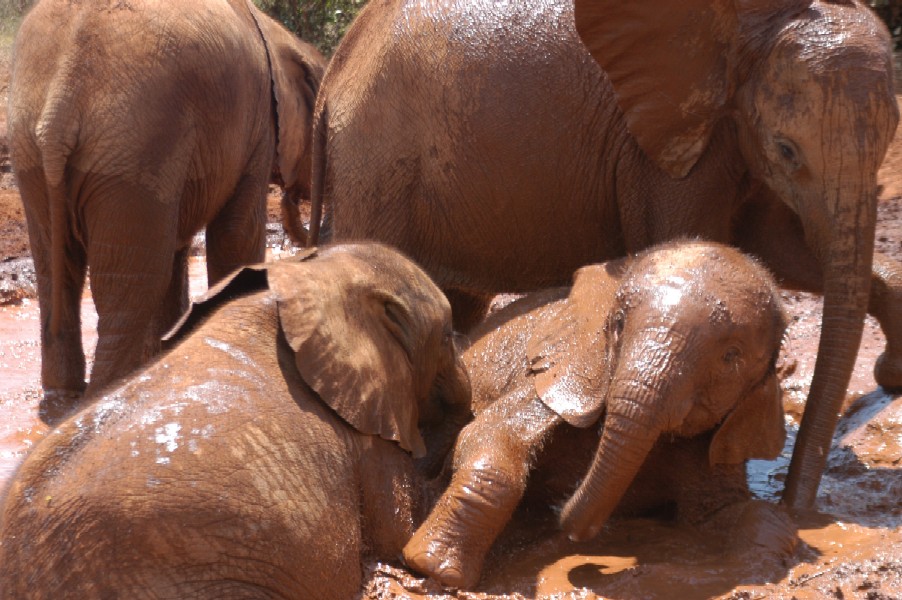 From the giraffe center we were off to the world famous Carnivore restaurant. Rob had been talking about it ever since it showed up as bullet point number one under what to do in Kenya. That seemed like an exaggeration but it was a rare opportunity to have Kenyan barbequed game meats and someone had rated it one of the top 50 restaurants in the world. The price was inline with its reputation but not bad by international standards at less than $25 per person. We arrived before the restaurant was ready but the attached bar was available. Peter came in with us to make sure we got a proper reservation and could be seated at 6:00, when it opened. We had a couple of drinks. One of the grillers at the massive BBQ near the front door hammed it up for a photo with Rob, holding one of the massive skewers up like sword. From the giraffe center we were off to the world famous Carnivore restaurant. Rob had been talking about it ever since it showed up as bullet point number one under what to do in Kenya. That seemed like an exaggeration but it was a rare opportunity to have Kenyan barbequed game meats and someone had rated it one of the top 50 restaurants in the world. The price was inline with its reputation but not bad by international standards at less than $25 per person. We arrived before the restaurant was ready but the attached bar was available. Peter came in with us to make sure we got a proper reservation and could be seated at 6:00, when it opened. We had a couple of drinks. One of the grillers at the massive BBQ near the front door hammed it up for a photo with Rob, holding one of the massive skewers up like sword.
At about 6:15 they finally started seating people. When the waiter came over to explain the set menu Rob just said we didn't need the salad or soup. He just wanted them to bring on the meat. It probably wasn't the first time someone had made that request. Before long the onslaught of animals started. Men circulated with skewers of meat and as long as our flag was up the meat kept coming. The waiter brought a rotating tray with sauces on top and salads on the bottom. Rob told them to take away the salads but I stopped them from being swept away. They were actually very good. The meats started with the lower end items like chicken, sausage, and pork ribs but it wasn't long before crocodile showed up, the first "game meat". It had a sort of fishy-tasting chicken taste. We didn't like it that much. The ostrich was great, served with a berry sauce. The lamb was excellent as well, served with mint sauce. For the pork they had a chunky apple sauce. The beef was tender. It was all very well done. The service was excellent and the surroundings were lively but fairly sophisticated for what amounted to a massive meat-fest.  I nibbled at salads along the way and even ate some of my potato but Rob stayed committed to his meat-only consumption. The ostrich was my favorite followed by the lamb and pork. There wasn't as much game meat available as we hoped but the gazelle meat balls were added to the menu at the last minute. Rob really liked them. They tasted like camel meat to me, which wasn't bad. I was doing really good for an ex-vegetarian but towards the end I felt like I might pass out. Rob kept the flag up but I was just waiving the waiters over to him. How we managed to fit any desert in is a mystery. I ate a slice of pineapple tart while Rob had ice cream. The term "food coma" never had a better application. Rob bought one of the zebra Grill Cook aprons at the gift shop before we left. Peter was waiting for us on time. Once we were back in our hotel room it was impossible to stay awake. I nibbled at salads along the way and even ate some of my potato but Rob stayed committed to his meat-only consumption. The ostrich was my favorite followed by the lamb and pork. There wasn't as much game meat available as we hoped but the gazelle meat balls were added to the menu at the last minute. Rob really liked them. They tasted like camel meat to me, which wasn't bad. I was doing really good for an ex-vegetarian but towards the end I felt like I might pass out. Rob kept the flag up but I was just waiving the waiters over to him. How we managed to fit any desert in is a mystery. I ate a slice of pineapple tart while Rob had ice cream. The term "food coma" never had a better application. Rob bought one of the zebra Grill Cook aprons at the gift shop before we left. Peter was waiting for us on time. Once we were back in our hotel room it was impossible to stay awake.
|
ZANZIBAR
Stone Town
July 11
July 12-14
Nungwi
July 15-18
Stone Town
I: July 19-23
II: July 19-23
Paje
July 23-27
Stone Town
July 27-Aug 1
TANZANIA
Dar Es Salaam
Aug 1-3
Moshi
I: Aug 3-31
II: Aug 3-31
III: Aug 3-31
Safari Circuit
Aug 17
Aug 18
Aug 19
Aug 20
Aug 21
Mt. Kilimanjaro
Aug 23
Aug 24
Aug 25
Aug 26
Aug 27
Aug 28
KENYA
Nairobi
Sept 1
Sept 2
Sept 3
Sept 4-5
UGANDA
Kampala
Sept 6
Sept 7-16
Kampala Short Stories
RWANDA
Kigali
Sept 16
Sept 17
Ruhengeri
Sept 18
Sept 19
Gisenyi
Sept 20
Kigali
Sept 21
Sept 22
UGANDA
Kampala
Sept 23
Sept 24-26 |

